- Home
- slideshows
- miscellaneous
- There are signs that social distancing is working in the US, even as the country becomes the coronavirus pandemic epicenter
There are signs that social distancing is working in the US, even as the country becomes the coronavirus pandemic epicenter
New York is battling the nation's worst outbreak of COVID-19 by far, with more than 44,600 cases.

New York just had its deadliest day on record with COVID-19, and things are expected to get worse from here.
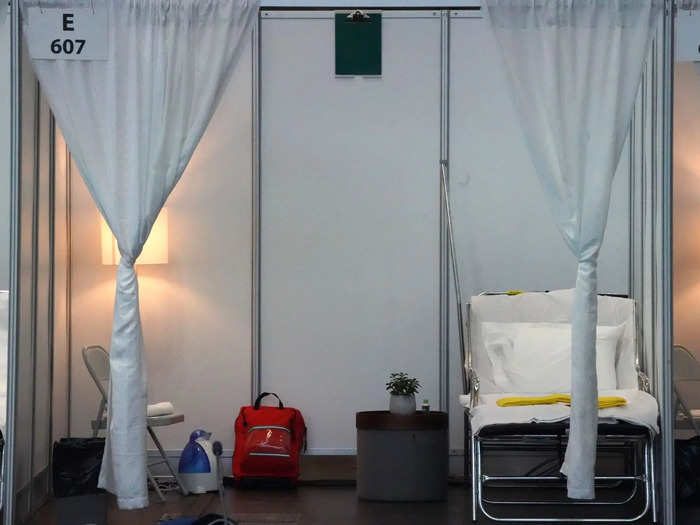
Manhattan's largest convention center is quickly being turned into a hospital with enough room for 1,000 more patients.
"We're looking at about 21 days for a possible apex," Cuomo said Friday morning. "So we want to do everything we can to be ready for (what) could hit us in 21 days ... We are doing everything we can."
So far, 4,720 people have been hospitalized with COVID-19 in the city. The disease continues to hit the elderly particularly hard in New York, while so far no one under 18 has died.
The borough of Queens has the highest number of hospitalizations in the city so far, but even there, it looks like the atypical high temperature readings might've peaked.
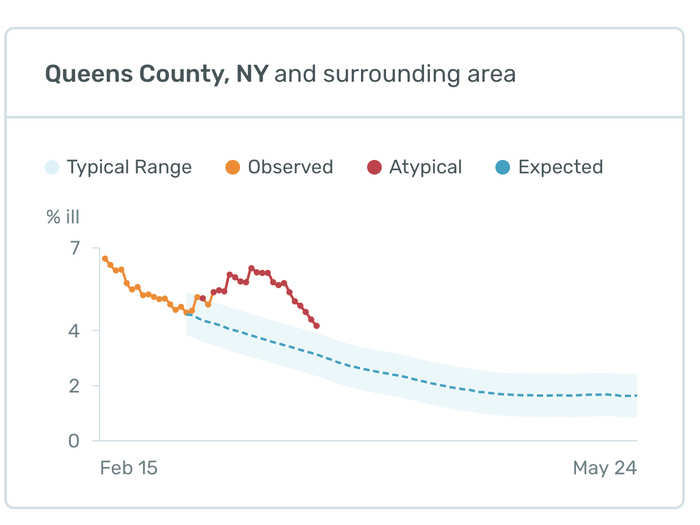
"Presumably that's COVID 19," Kinsa founder and CEO Inder Singh told Business Insider. "I can't tell you affirmatively, but ... something is going on here."
A high temperature is one of the earliest signs someone might have COVID-19, but that's often not the worst part of their illness.
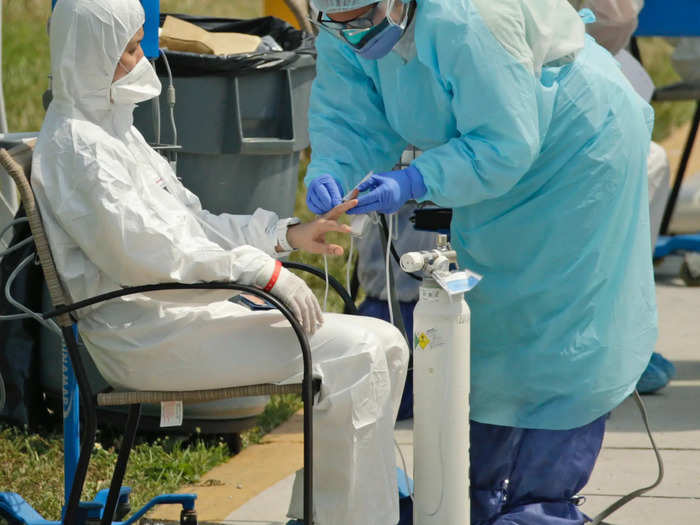
A fever is one of the first tell-tale signs that a person has COVID-19, but after that, their illness can drag on for upwards of two weeks.
It's often not until about five days in that people develop difficulty breathing, and it can take about a week after initial symptom onset for people to be admitted to the hospital, if they need to be.
Singh is worried that COVID-19 could soon hit Florida hard.
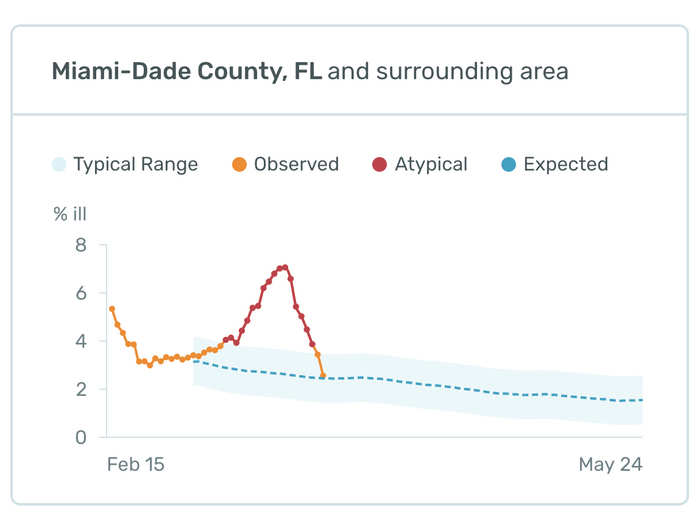
The state has confirmed 2,900 cases so far, and all but a few hundred of those were diagnosed this week.
Still, Kinsa's fever data also suggests that in Florida, keeping people off the beaches and away from one another is helping slow the spread of "atypical" illnesses further.
In Washington, where the very first US case of COVID-19 was recorded in January, the governor on Monday ordered everyone to "stay home" for the next two weeks.
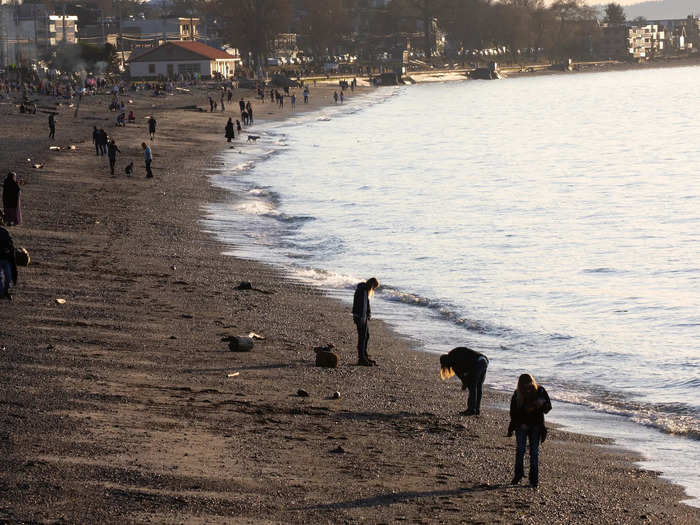
People in Washington can still go outside, do grocery shopping, and pick up other essential supplies, but they're expected to stay at least six feet away from other people.
For about a week now, the number of atypical high temperature readings picked up in Seattle has been steadily declining.
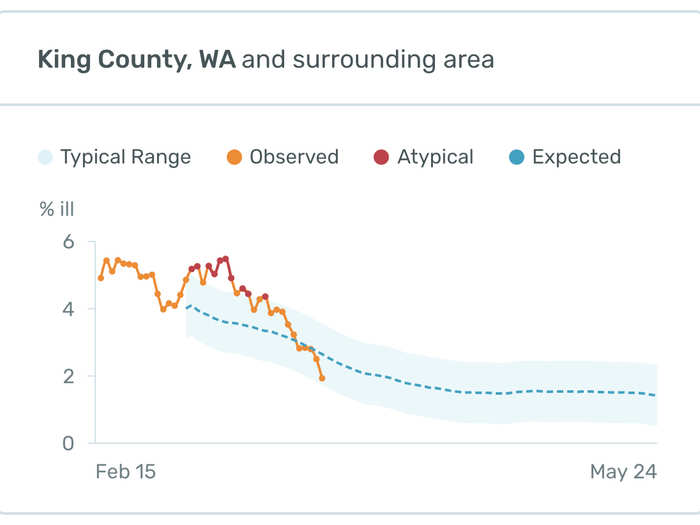
It's possible that the Kinsa data is simply charting reduced illnesses overall, since people staying away from each other will avoid spreading around more than just COVID-19.
"It is basically taking our real-time data signal and subtracting out what we would have normally expected from cold and flu," Singh said of the "atypical" illness tool. "The residual is something else. It could be an anomalous flu-B strain."
But Singh said he thinks at least some of the atypical illness data is picking up some cases of COVID-19.
Washington state has so far logged the second-highest number of coronaviruses cases in the US after New York, with more than 3,200 confirmed illnesses.
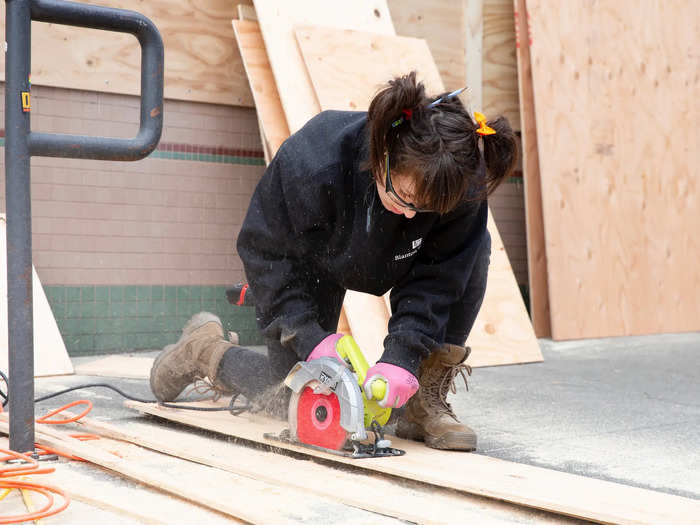
Kinsa's thermometer data may be picking up a signal of even more cases of COVID-19 that aren't being tested or confirmed in labs, since many places are only testing their sickest patients.
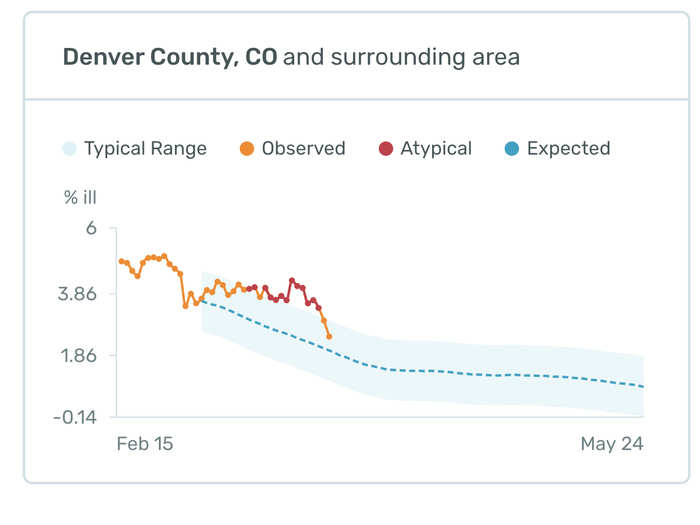
Colorado so far has tested just over 10,100 people spread across nine different outbreaks.
"If you don't need to be hospitalized, your treatment will be the same, no matter the test result," the state's department of public health and environment says on its website. "Ideally, everyone who wanted a test would be able to get one, but right now, that is not possible."
On Thursday, the nation's Major League Baseball organization encouraged everyone to celebrate "opening day at home" this year. The stands were empty at Dodger Stadium in Los Angeles.
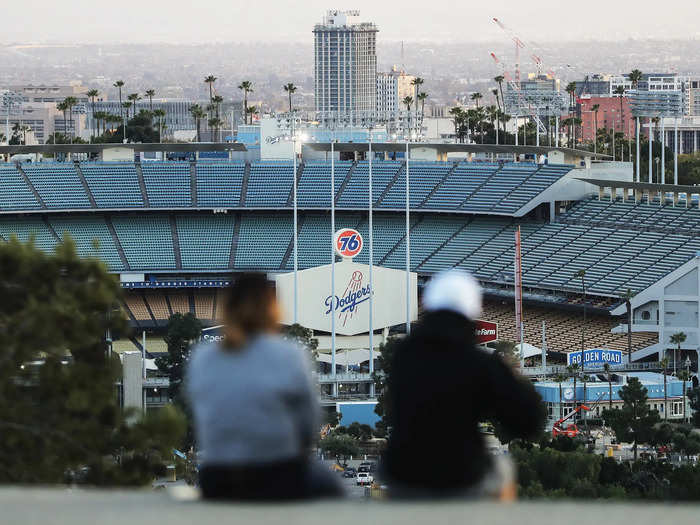
MLB is streaming old games on MLB.TV and YouTube, while some of the pros are still practicing their sport quietly, out of view.
Further north in California, San Francisco's shelter-in-place order also seems to be helping reduce feverish illnesses, by keeping people at home for all but their most essential errands.
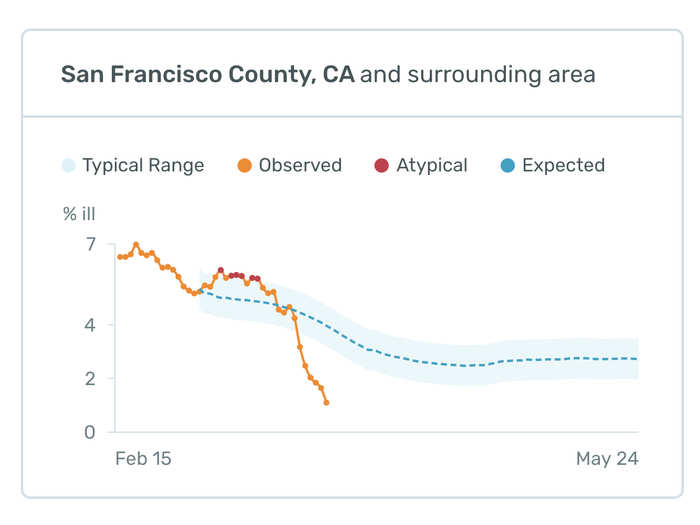
"My room has become my bedroom, gym, and office, and that's likely to not change anytime soon," Business Insider's Katie Canales wrote after completing one week of the city's shelter-in-place order, which is scheduled to last until April 7, but could get extended.
Nationally, just about every area is experiencing fewer fevers than it was a few weeks ago, according to Kinsa's data. The company pulls together about 150,000 home smart thermometer readings per day.

Part of the downturn could be a sign of spring.
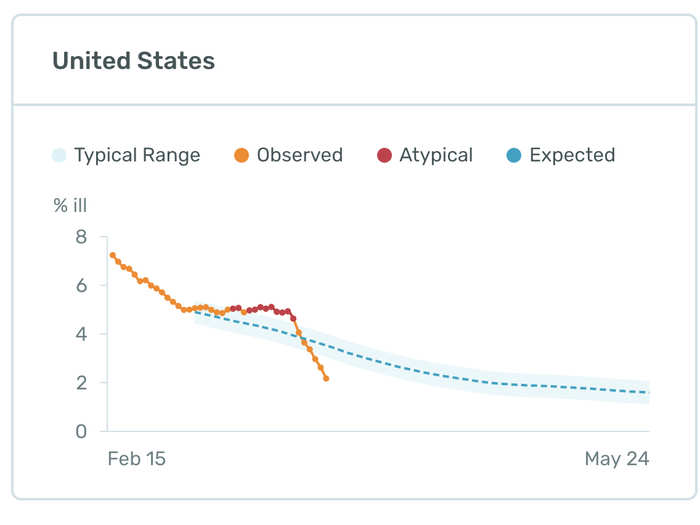
Viruses like the flu have less survivability in warmer, wetter weather, but the Kinsa model is designed to account for such seasonal ups and downs, so that's an unlikely explanation for the atypical fever reduction, especially because the coronavirus is being transmitted between people just fine in balmy Australia right now.
"Feverish illness levels are dropping in many regions," Kinsa says on its website. "This does not mean that COVID-19 cases are declining. In fact, we expect to see reported cases continue to surge in the near term. "
But the trends provide an initial glimmer of hope that staying away from each other is working to slow the spread of feverish illnesses, including COVID-19.

Popular Right Now
Advertisement